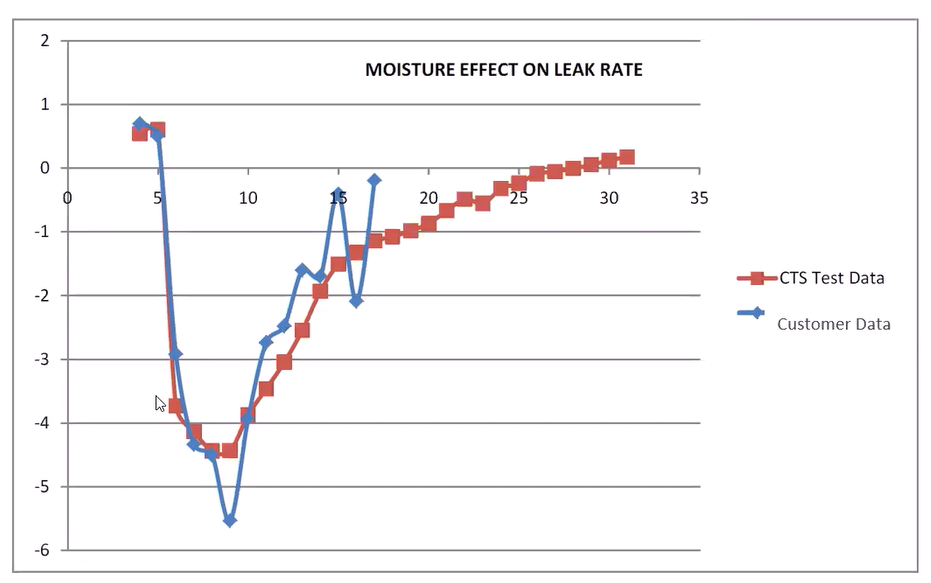Special considerations for leak testing die cast parts
Die casting is a common process in which molten metal is forced under high pressure into a mould cavity that’s created with two dies of hardened steel. In this post, we explore the specific physical characteristics of die cast parts and how these impact leak test.
Surface finish
Unmachined castings typically have rough surfaces, at least in terms of achieving a proper seal at the leak test station. To properly seal unmachined or as-cast surfaces we need to choose the correct seal material. The harder the seal material, the more challenging it will be to achieve a reliable seal.
The easiest solution is to use a soft seal durometer of perhaps 30 to 40 then experiment to make sure it suits the application. This will make it easier to achieve a reliable seal, faster. The downside is these softer seals may wear too fast during a shift. The alternative is to add a finishing station, where only these areas of the part that contact the seal are polished to be able to achieve a more reliable fit with a harder and more durable seal (such as durometers of 60, 70, or 80). It’s always a trade-off between seal wear or issues with test accuracy at the leak test station, versus the time and cost of adding another finishing step.
Porosity
Depending on the metal and the die-casting method being used, die-cast parts also demonstrate different degrees of porosity. This can either result in an unwanted leak path, or a variance in the repeatability of leak test results that must be compensated for.
Porous leak paths are typically torturous – it’s not a smooth and linear route. Because of this, the gas or liquid that you don’t want to leak will often clog in this leak path at standard atmospheric pressures and temperatures. But once temperature and pressure rise, perhaps due to extremes of operating conditions, unwanted leaks may occur.
Even when you are pressurizing for a leak test, this porosity must be filled first before a stable test pressure, and a reliable and repeatable leak test can be achieved. The porosity doesn’t have to qualify as an actual “leak” or hole to sabotage test accuracy.
This porosity may also hold onto its pressure from previous test cycles. If you run a leak test again without providing enough time for this pressure to bleed off and the part to stabilize to atmospheric conditions once again, you may get false passes on what is in fact a leaky part.
In addition to porosity being a challenge for leak testing, two other variables that we see really affecting repeatable measurement results for die castings are temperature and moisture.
Temperature
First, ambient temperature – the temperature within the room where the part is being tested and where that part is held going into test.
Depending on the time of year and how the plant HVAC systems are cycling throughout the day, the ambient air temperature may change enough during a production shift to have a material impact on test reliability. At some point, the ambient air temperature has deviated from the temperature you used to calibrate the test. If the temperature rises too much, it can lead to false passes. If it drops too low, false fails. Test parameters with small leak rates are particularly vulnerable to this.
Second, process-related temperature swings. These can result from parts that come to leak test from a wash or other production step that leads to the part being warmer than the ambient temperature. Then there are instances where a leak station may be calibrated to compensate for that, but then the parts spend too long waiting on a pallet before going into test – the part is now colder than what the leak test is calibrated for.
Moisture
Castings are often washed after machining and must be suitably prepped before heading to the leak test station. Standing liquid on a part’s surface, for example, can clog porosity and lead to a false pass.
In addition, turbulent air moving into a pressurized apart can then vaporize any standing water. This can cause a density difference within the porosity of the part that again leads to an erroneous reading.

Above is an example of a customer who used upstream washing. Operators had calibrated ambient conditions and dry parts for the leak test, with a leak rate of about 0.5 CCs. When we wetted that part with a spray of water and then tested it immediately, we discovered that the upstream washing could be resulting in a false leak reading as much as four CCs. Moisture from the upstream wash, if not addressed, could mask a substantial leak.
Which leak test is right for your die castings?
As always, it depends. For diecast, we may use the humble dunk test, pressure decay, differential pressure decay, or mass flow. For very small leak rates or parts that can not be tested at a stable temperature, we may also use trace gas techniques, nitrogen purge technology, or hard vacuum testing.
We choose each of these technologies based on their sensitivity ranges. It all comes down to the basic physics and what option will best provide you with the desired combination of test cycle time, accuracy, and repeatability (see the Ideal Gas Law) for your application. We can help you control the variables that impact your die-cast leak testing.


